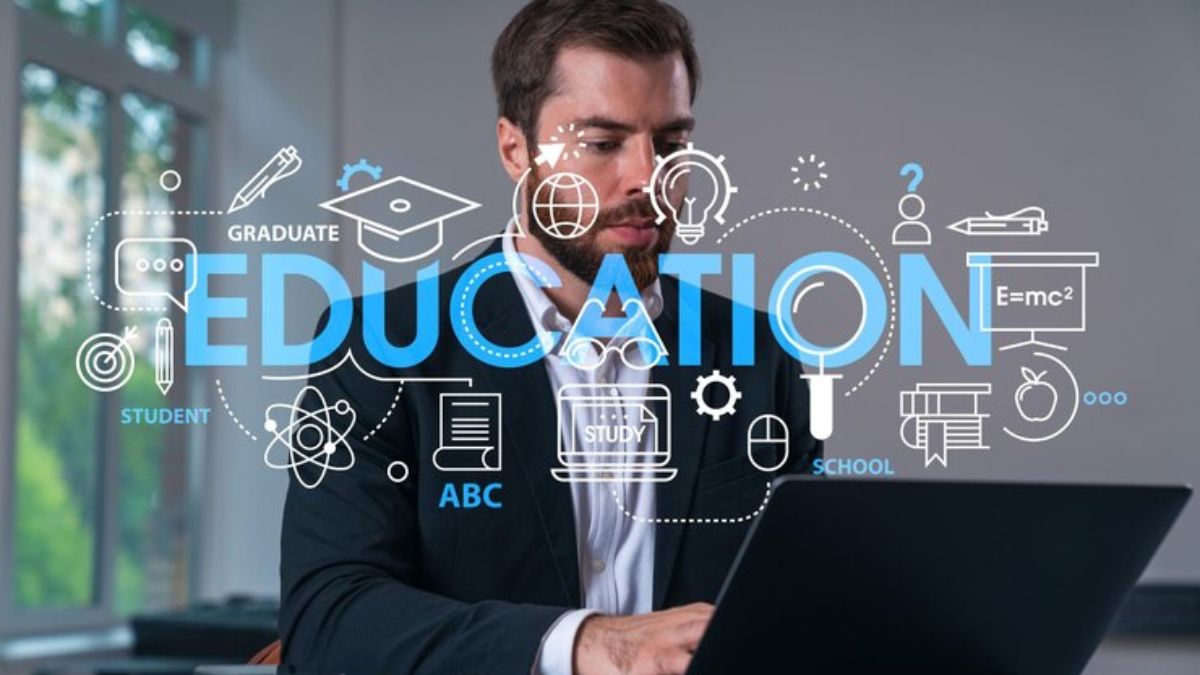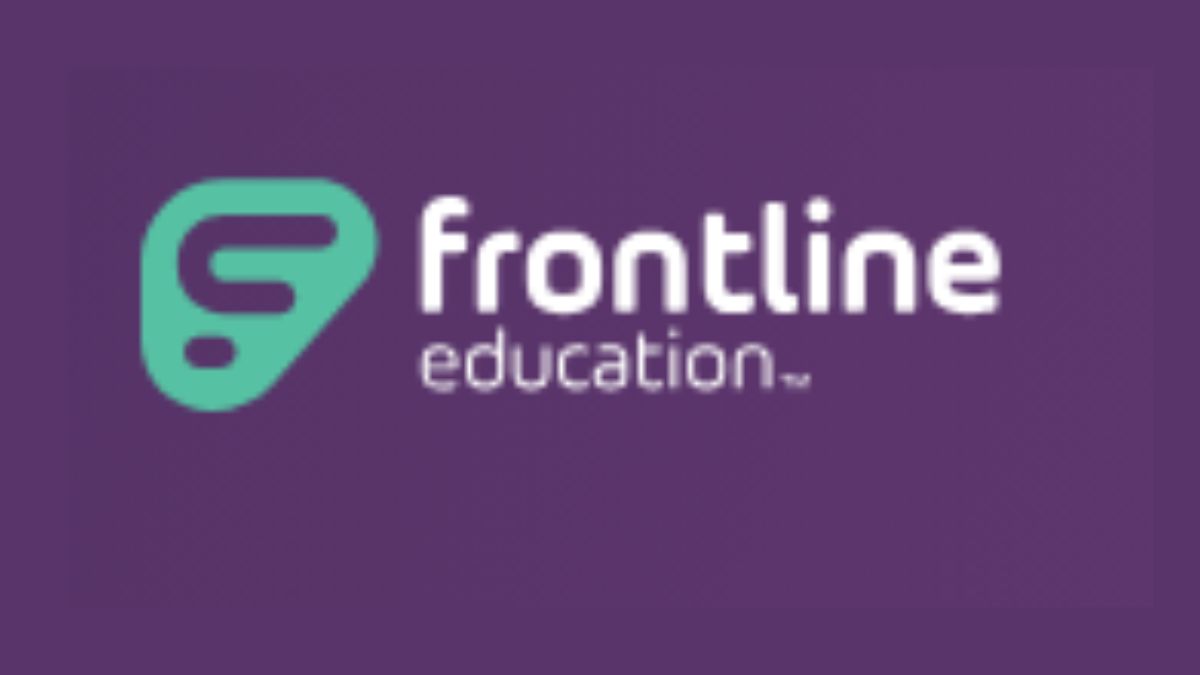EDUCATION
Direct Educational Services: Revolutionizing Learning

You have entered the revolutionary world of direct educational services, where knowledge has no bounds. To help you better comprehend the topic, we explore the relevance, difficulties, and developments of direct educational services in this article.
What are Direct Educational Services?
Individualized lesson plans are an integral part of direct educational services. Personalized techniques are the main emphasis of these services, which provide an atmosphere that is both dynamic and interesting for learning, as opposed to the more conventional approach.
Importance of Direct Educational Services:
The future of education is heavily influenced by direct educational services, which are of utmost importance. Students are more invested, which in turn improves their academic performance and fosters a lifelong passion for learning when lessons are personalized to their individual needs.
How Direct Educational Services Benefit Learners:
The advantages are numerous, ranging from catering to different learning styles to offering specific assistance. Students are given the one-on-one attention they need, which helps them feel empowered and confident as they go through their education.
Types of Direct Educational Services:
Explore many forms of direct educational services, such as individualized education programs, workshop formats, and tutoring services. An all-encompassing and flexible learning environment is guaranteed by the fact that each kind is designed to meet individual needs.
Personalized Learning Programs:
Investigate how well students do in individualized learning programs that allow them to move through the curriculum at their own speed. By laying a firm groundwork for future learning, this approach improves understanding and memorization.
Challenges in Direct Educational Services:
Despite the many advantages, there are still obstacles in the way of direct educational services. In order to successfully deploy direct educational service’s, it is essential to overcome obstacles including limited resources and reluctance to change.
Overcoming Barriers in Implementation:
Tackling obstacles calls for careful preparation and teamwork. Find effective ways to deal with opposition and work around limited resources so that direct educational service’s may be integrated smoothly.
Direct Educational Service’s in the Digital Age:
Make the most of the information technology revolution by providing direct educational service’s online. Find out how DSEs are improving students’ access to and engagement with education by utilizing technology to provide more interesting and relevant learning experiences.
Leveraging Technology for Better Education:
Investigate how technology, such as dynamic web-based platforms and comprehensive virtual experiences, might be used to enhance the educational process. Learn how these innovations prepare students for a tech-driven future and improve learning outcomes.
Key Players in Direct Educational Services:
Recognize the pioneers in the field of direct educational services; they are key players. These influential organizations, ranging from young, tech-savvy startups to long-standing, well-respected universities, are changing the face of direct educational services and the world as we know it.
Success Stories in Direct Educational Service’s:
See the difference via motivational success stories in direct education service’s. Feel the power of direct educational services as you observe the lives of kids being changed for the better.
Real-life Transformations:
Case studies demonstrating effective implementations provide insight into real-world transformations. Find out what worked by dissecting these success stories and applying what you learn to your own endeavors.
Case Studies:
Through the use of case studies, we can better understand the impact that direct educational service’s have had in the past. These examples show how individualized learning may boost students’ academic performance and engagement.
Analyzing Successful Implementations:
Discover the commonalities among successful situations by analyzing successful implementations. Gain an understanding of the critical success elements, which will serve as a guide for schools and teachers seeking to successfully adopt direct educational service’s.
Innovations in Direct Educational Service’s:
Take a look ahead at what’s to come. Learn about the latest innovations influencing the future of direct educational service’s, such as gamified education and AI-driven learning systems.
Future Trends and Developments:
Look forward to how direct educational services will change in the future. Discover how the educational environment will be even more inclusive and successful as a result of future trends and advances that improve the learning experience.
Direct Educational Service’s and Student Success:
Determining the relationship between direct educational assistance and student achievement is an important goal. Investigate research that has quantified the effect on student performance in the classroom to back up claims that individualized instruction works.
Measuring the Impact on Academic Achievement:
Investigate studies and research that demonstrate how direct educational service’s improve academic results. Gain an appreciation for the ways in which individualized instruction helps students succeed and gets them ready for what’s to come.
Addressing Concerns about Direct Educational Service’s:
In order to achieve broad acceptability, it is essential to address concerns regarding direct educational service’s and dispel myths and misunderstandings. Get to the bottom of people’s frequent questions and concerns about direct educational service’s by answering their questions and providing explanations.
Common Misconceptions and Clarifications:
Clear the air by addressing common misunderstandings, such as those on cost and efficacy. Make direct educational service’s more accessible and effective by providing explanations backed by evidence.
Best Practices for Implementing Direct Educational Service’s:
Follow recommended practices to successfully complete the installation process. From outlining specific objectives to performing continuous evaluation, these suggestions cover all the bases and ensure the effective and lasting integration of direct educational service’s.
Ensuring Effectiveness and Sustainability:
Thorough explanations of what works ensure a successful rollout. In order to make sure that direct educational service’s are successful and sustainable in the long run, educators and institutions should follow these strategies.
The Future of Direct Educational Service’s:
Conclude with some thoughts on how direct educational service’s will continue to adapt to new circumstances. Think about where you are now and where you want to go, drawing attention to your dedication to constant growth and innovation.
Evolution and Continuous Improvement:
As we wrap up, let us welcome the ever-changing landscape of direct educational service’s. With a dedication to offering students all across the globe exceptional educational opportunities, the future is filled with thrilling prospects.
Conclusion:
Finally, when it comes to innovation and individualized instruction, direct educational service’s shine brightest. This comprehensive guide has shown the significance, challenges, success stories, and future trends of direct educational services, further demonstrating their transformative impact.
FAQs:
Q: Are direct educational service’s suitable for all age groups?
Sure thing! Students of various ages, from those in elementary school to working people looking for continuing education, can benefit from direct educational services.
Q: How do personalized learning programs benefit students?
Personalized learning programs can enhance students. Comprehension and enthusiasm by adjusting their learning style and pace to suit their specific needs.
Q: What role does technology play in direct educational service’s?
By facilitating more accessible and engaging learning through the provision of interactive platforms. Virtual experiences, and tools driven by artificial intelligence, technology improves direct educational services.
Q: How can institutions overcome resistance to implementing direct educational service’s?
The best way to overcome opposition and create an atmosphere conducive to implementation is to communicate openly, highlight success stories, and include stakeholders in the decision-making process.
Q: Are there any notable success stories of students benefiting from direct educational service’s?
Sure thing! The article is filled with motivational success stories that show how direct educational service’s have improved students’ lives.
Q: What are the key factors for ensuring the sustainability of direct educational services?
The success and sustainability of direct educational service’s over the long term depend on having clear objectives, regularly assessing progress, and adjusting to changing educational environments.
EDUCATION
Expanding Horizons: Supporting Educational Outreach

Educational outreach initiatives play a vital role in broadening access to quality education, fostering community engagement, and nurturing a culture of lifelong learning. In this blog post, we’ll delve into the realm of educational outreach, exploring the significance of supporting learning initiatives and the transformative impact of expanding horizons through educational outreach programs.
Empowering Underserved Communities
Educational outreach programs aim to empower underserved communities by providing access to educational resources, mentorship, and skill-building opportunities. These initiatives bridge the gap in educational equity, enabling individuals from diverse backgrounds to pursue learning and personal development.
Collaborative Partnerships and Stakeholder Engagement
Successful educational outreach often hinges on collaborative partnerships with stakeholders such as schools, nonprofits, government agencies, and corporate sponsors. By leveraging diverse expertise and resources, these partnerships amplify the impact of educational outreach, reaching a broader audience and addressing multifaceted educational needs.
Enriching Learning Experiences
Educational outreach enriches learning experiences by introducing innovative teaching methods, extracurricular activities, and hands-on learning opportunities. These initiatives ignite curiosity, creativity, and critical thinking, fostering a holistic approach to education that extends beyond traditional classroom settings.
Mentorship and Role Modeling
Mentorship programs embedded within educational outreach initiatives provide guidance, support, and positive role modeling for participants. Mentors serve as invaluable sources of inspiration, offering insights, encouragement, and practical advice to help individuals navigate their educational and career pathways.
Digital Literacy and Access to Technology
In an increasingly digital world, educational outreach efforts prioritize promoting digital literacy and ensuring access to technology resources. By equipping learners with essential digital skills and tools, these programs prepare individuals to thrive in an interconnected, technology-driven society.
Career Exploration and Readiness
Educational outreach programs often incorporate career exploration activities and readiness workshops, exposing participants to diverse career paths and helping them develop the skills and mindset necessary for future professional success. Such initiatives instill confidence and ambition in pursuing meaningful careers.
Community Building and Social Impact
Educational outreach fosters community building and social impact by nurturing a sense of belonging, civic responsibility, and collective investment in education. These programs cultivate a supportive network that celebrates learning, fosters collaboration, and uplifts the entire community.
Bridging the Gap through B2G Marketing Strategies
In educational outreach, using B2G (Business to Government) marketing boosts visibility and effectiveness. Targeting governmental agencies secures funding, endorsements, and partnerships, amplifying program impact. Effective B2G strategies highlight educational benefits like social value, community enhancement, and lifelong learning promotion among underserved groups. This approach garners support and resources for lasting impact on educational programs.
Lifelong Learning Advocacy
Through educational outreach, advocacy for lifelong learning is championed, emphasizing the value of continual personal and professional development across all stages of life. By promoting a culture of lifelong learning, these initiatives instill a growth mindset and adaptability in individuals, encouraging ongoing self-improvement.
Cultural Exchange and Global Awareness
Many educational outreach programs embrace cultural exchange and global awareness, broadening participants’ perspectives and fostering cross-cultural understanding. Exposure to diverse cultures, languages, and traditions nurtures empathy, respect, and a deeper appreciation for global interconnectedness.
Partnerships with Educational Institutions
Collaborating with educational institutions, including K-12 schools and universities, enhances the reach and impact of educational outreach initiatives. Establishing partnerships with academic institutions enables the integration of educational outreach programs into formal curricula and student support services, amplifying their influence.
Conclusion
Educational outreach is a catalyst for expanding horizons, empowering individuals, and driving positive change through accessible, impactful learning initiatives. By supporting educational outreach efforts, communities can uplift and transform lives, creating a legacy of educational empowerment and lifelong learning. Embrace these strategies to champion educational outreach and contribute to a world where learning knows no bounds.
EDUCATION
Convocatoria para Auxiliares de Educación 2024

Educators from all over the globe are being sought after through the Convocatoria para Auxiliares de Educación 2024, often known as the Call for Education Assistants. Learn about the function of the educational auxiliary, how to apply, and the advantages, disadvantages, and possibilities that come with it in this in-depth essay.
What Does It Mean to Be an Auxiliary in Education?
When it comes to helping out instructors and educators in different classrooms, auxiliary aids are indispensable. Among their many roles is the facilitation of extracurricular activities, language immersion programs, and classroom support. Their primary function is to supplement students’ educational experience by providing them with useful materials.
Benefits of Being an Auxiliary in Education
Professional Development Opportunities
Among the many advantages of taking part in the Convocatoria para Auxiliares de Educación is the chance to advance in one’s career. Auxiliaries improve their leadership, organizational, communication, and hands-on experience in a classroom setting.
Contribution to Education
Becoming an auxiliary is a great way for folks to help enhance education all throughout the world. In the end, they help students have a more inclusive and enjoyable educational experience by bridging gaps in language acquisition, cultural understanding, and academic assistance.
Networking and Collaboration
There is an opportunity for auxiliaries to meet and work with administrators, teachers, and other auxiliaries from all walks of life. Through working together, they are able to expand their professional networks and experience other cultures.
Requirements and Qualifications
There are specific conditions and qualities that candidates must achieve in order to participate in the Convocatoria para Auxiliares de Educación 2024.
Educational Background
Applicants are often required to hold a Bachelor of Science degree in teaching, languages, or a closely connected field. Some programs may also provide preference to applicants with relevant work experience.
Skills and Competencies
The ideal candidate will be able to communicate clearly, understand and respect different cultures, and work well with people from different backgrounds. Depending on the position, you may need to be fluent in more than one language in addition to the language of teaching.
Language Proficiency
Given the nature of the position, fluency in the teaching language is absolutely necessary. Candidates may be asked to present standardized test results or language certificates as evidence of their language competency.
How to Apply for Convocatoria para Auxiliares de Educación 2024
Application Process
The application procedure usually entails uploading a résumé, cover letter, academic credentials, and an online application form. A personal statement and/or recommendation letters may be necessary for admission to some programs.
Necessary Documents
The program usually requests that candidates provide copies of relevant certifications or papers, such as certificates of language competency or educational qualifications, among others.
Deadlines
Please be sure you submit your applications by the dates and times given by the program administrators. Please ensure that all required papers are submitted on time; applications received after the deadline will not be considered.
Tips for a Successful Application
Tailoring Your Resume
To show that you are qualified for the position of educational auxiliary, tailor your resume to emphasize your relevant experiences, abilities, and credentials. Highlight your language skills, past tutoring or teaching experience, and cross-cultural understanding.
Highlighting Relevant Experience
Whether it’s working with kids, teaching languages, or being involved in educational projects, highlight any relevant experience you have. You can bolster your application by showcasing concrete instances of your contributions to educational environments.
Demonstrating Passion for Education
Tell kids how much you care about their education and how you intend to make a difference in their lives. Please elaborate on your interest in becoming an educational auxiliary and the benefits you and the students you will be working with stand to reap from this role.
Selection Process
Several steps, such as screening, interviews, and evaluation, are usually included in the selection process for the Convocatoria para Auxiliares de Educación.
Screening
As part of the screening process, applicants are examined to make sure they fulfill the program’s minimal criteria and credentials. Those that are qualified can move on to the next round of interviews.
Interviews
The next step is to invite the candidates who made the cut to an interview, which might take place in person or over video chat. Candidates get a chance to demonstrate their qualifications for the position and highlight relevant experiences during the interviews.
Assessment
Language proficiency exams, teaching demos, and situational judgment tests are some of the extra evaluations that candidates may have to complete. In order to determine if an applicant is qualified to serve as an educational auxiliary, program organizers use these tests.
Training and Orientation
Successful participants in the Convocatoria para Auxiliares de Educación get comprehensive training and orientation prior to beginning their new positions.
Preparation for the Role
Auxiliaries learn all they need to know about their jobs, duties, and expectations in the lead-up to the Role Training workshops. Cultural awareness, classroom management, and lesson preparation are some areas that they could want some help with.
Understanding Policies and Procedures
Codes of conduct, emergency procedures, and safety requirements are some of the regulations that auxiliary workers learn about. By familiarizing themselves with these guidelines, they may ensure a smooth transfer into their duties.
Placement and Assignment
Auxiliaries are placed at educational institutions all around the world once they finish training and orientation.
Location Preferences
During the application process, a candidate may be asked to select a placement site. Program criteria and availability, with preferences taken into consideration, decide final placements.
Role Assignments
Classroom assistants, language tutors, and cultural ambassadors are just a few examples of the auxiliary jobs that could be offered to them by the school. To thrive in these positions, you need to be able to pivot and change with the times.
Expectations
Professionalism in dealings with children, teachers, and the community, as well as a strict adherence to program standards and procedures, are all expectations of auxiliary workers.
Support and Resources
Education auxiliary workers are provided with continuous assistance and resources to enable them to excel in their positions.
Mentorship Programs
Through mentorship programs, some organizations provide new recruits with the chance to learn from more seasoned auxiliary members. Mentors guide new auxiliary through difficult times by providing guidance, sharing best practices, and offering counsel.
Access to Educational Materials
Educational materials, tools, and curriculum guidelines may be available to auxiliary workers so that they may better design and deliver courses. In order to accomplish their pedagogical goals, auxiliaries rely on these materials to supplement student learning.
Assistance Channels
Typically, program organizers would set up channels where auxiliaries may go to get advise or aid with things like administrative tasks, cultural adaptations, or even just their personal lives. Auxiliaries will feel supported during their assignments thanks to these outlets.
Career Growth and Advancement Opportunities
Opportunities for professional development and promotion abound for those who take part in the Convocatoria para Auxiliares de Educación.
Continuing Education
During or after their assignments, auxiliary workers may be able to take advantage of chances for continuing their studies or advancing their careers. Some examples of such programs are language classes, credentials to teach, or advanced degrees in subjects connected to education.
Promotional Pathways
Auxiliaries that demonstrate exceptional performance may be eligible for promotions that lead to leadership positions or career advancement opportunities within the company. Possibilities for mentoring, program coordination, or project management may arise in this context.
Challenges Faced by Auxiliaries in Education
Auxiliaries in education have many opportunities for growth and development, but they also face unique obstacles in their field postings.
Language Barriers
When deployed in settings where they do not speak the native language fluently, auxiliaries may find it particularly difficult to overcome linguistic obstacles. One way to overcome this difficulty is by utilizing language immersion techniques and effective communication skills.
Cultural Adaptation
Particularly for auxiliary stationed in foreign nations with diverse cultural practices, it can be difficult to adapt to a new social and cultural milieu. Adapting to a new culture might be easier with cultural sensitivity training and chances for cultural interchange.
Work-Life Balance
It could be difficult to juggle the responsibilities of the auxiliary position with other priorities, such as personal obligations and free time. To strike a good work-life balance, auxiliary workers may need to learn to control their emotions and set limits for themselves.
Success Stories
Testimonials from Previous Auxiliaries
Auxiliaries who have participated in programs like the Convocatoria para Auxiliares de Educación often speak highly of the program and its impact on their lives. These anecdotes show how the training helped people develop both personally and professionally.
Impact on Personal and Professional Growth
The Convocatoria para Auxiliares de Educación is a great opportunity for auxiliaries to develop both personally and professionally. In the process, they grow as people and acquire knowledge that will be useful in all their future pursuits.
Community Engagement and Integration
Participation in cultural exchange events and networking with local community members are highly encouraged for auxiliaries.
Involvement in Local Communities
Volunteering, attending cultural events, and participating in community activities are all great ways for auxiliary to become connected in the local culture and meet interesting people.
Cultural Exchange
Auxiliaries can promote cross-cultural understanding and appreciation by sharing aspects of their own culture with the populations they assist.
Building Relationships
Strong relationships formed with members of the community, instructors, and students lead to a more interesting classroom and more rewarding extracurricular activities.
Conclusion
The Convocatoria para Auxiliares de Educación 2024 is a great chance for anyone who want to make a difference in education all around the globe. Anyone may make a difference in the lives of kids all across the globe, get practical experience, and earn important skills by being an auxiliary.
FAQs:
What is the duration of the Convocatoria para Auxiliares de Educación placements?
A placement’s usual length might vary from a few months to an entire academic year, depending on program and placement-specific criteria.
Can I participate in the program if I don’t have prior teaching experience?
Though it’s usually helpful, having teaching experience isn’t necessary. Individuals that are enthusiastic about education and eager to learn are often welcomed by various programs.
Are there age restrictions for participating in the Convocatoria para Auxiliares de Educación?
Age restrictions are program-specific. Applicants of any age may be considered for some programs, while others have stricter age requirements.
Is financial assistance provided for travel and accommodation expenses?
Some schools provide financial aid in the form of stipends or grants that might help defray the cost of travel and lodging. However, this is decided by the course of study and the location of the placement.
What support is available for auxiliaries facing challenges during their placements?
Mentorship programs, psychological services, and administrative help are just a few of the ways in which program organizers make themselves available to auxiliary workers.
EDUCATION
Frontline Education Sign In: Navigating the Future of Education

The significance of Frontline Education Sign-In in today’s ever-changing educational environment, where new technologies are constantly altering the nature of both learning and teaching, is immense. Designed to improve communication, simplify administrative processes, and cultivate a collaborative learning environment, the Frontline Education Sign-In portal is an essential component of educational administration systems.
Navigating the Frontline Education Sign-In Portal
Accessing the Sign-In Page
Teachers, principals, and anyone else with a stake in the process can begin by going to the designated sign-in page. A smooth experience is guaranteed by the user-friendly interface, which promotes efficiency from the very beginning.
User Credentials and Security Measures
Password security and the protection of sensitive information are emphasized when users are asked to provide their credentials upon reaching the sign-in page. Ensuring the utmost security for user data is our top priority at Frontline Education Sign-In.
Benefits of Using Frontline Education Sign-In
Streamlined Communication
The Frontline Education Sign-In system’s capacity to expedite communication among teachers, administrators, and support personnel is one of its noteworthy features. A coherent learning community is formed via the use of real-time announcements, updates, and messaging capabilities.
Time and Attendance Tracking
In educational institutions, accurate time and attendance monitoring is of the utmost importance. By streamlining the process and providing meaningful data, Frontline Education Sign-In improves resource allocation and planning.
Resource Accessibility
Lesson plans and professional development materials are only two of the many educational resources that are readily available on the site. A more enriching educational experience is enhanced by this accessibility.
Common Issues and Troubleshooting
Forgotten Passwords
The sign-in site has simple password recovery tools to deal with the frequent problem of users forgetting their passwords. Teachers won’t have any trouble getting back to work after resetting their passwords.
Technical Glitches
Technical issues might arise despite its sturdy construction. With Frontline Education Sign-In’s specialized support system, any technical difficulties may be quickly addressed and resolved, reducing downtime.
User Support
In the event that teachers experience any difficulties while utilizing the platform, a thorough system of user assistance is available to assist them. When compared to other education management systems, Frontline Education stands out for its dedication to customer happiness.
Maximizing Frontline Education Features
Personalized Dashboards
Dashboards may be customized by educators to suit their own needs. This feature improves the user experience and makes it easier for educators to find the information that is most important to them.
Integration with Other Platforms
By integrating with other educational platforms, Frontline Education Sign-In creates a coherent environment. Because all of the data and operations are centralized, this integration makes educational institutions more efficient overall.
Updates and New Features
With its constant stream of upgrades and new features, Frontline Education Sign-In is the leading edge of education technology. As a result of this dedication to innovation, teachers will have access to cutting-edge resources.
Frontline Education Sign-In in Different Educational Settings
K-12 Schools
Educators in K-12 environments may devote more time to actually teaching thanks to Frontline Education Sign-In, which streamlines administrative procedures. The platform’s user-friendly layout is perfect for teachers who work with students of all ages and backgrounds.
Higher Education Institutions
Universities and Colleges at the Front Line The advantages of Education Sign-In are expanded to include higher education institutions, providing a complete answer to the problem of administering intricate academic systems. Teachers, school officials, and students may all use the site to stay in touch and share materials.
Professional Development Programs
Frontline Education Sign-In is a one-stop shop for teachers participating in professional development courses. It opens doors to learning materials, tools, and chances for teamwork, promoting the educational community’s ongoing development and enhancement.
Best Practices for Frontline Education Sign-In
Regular Password Updates
One easy way to keep your data safe is to encourage users to change their passwords often. To improve the platform’s security, educators are asked to update their passwords at set intervals.
Security Awareness Training
Training for Security Awareness in the Field Education Sign-In goes above and above by teaching people to be more cautious with their personal information. By being proactive, we can make sure that teachers know about any security risks so they can help keep the school safe.
Utilizing Mobile Apps
With Frontline Education Sign-In’s mobile apps, teachers can stay connected even while they’re out and about. Educators may remain connected and productive at all times with this seamless platform access from numerous devices.
Future Trends in Frontline Education Technology
Artificial Intelligence Integration
The use of AI has the potential to completely transform systems that oversee educational administration. When it comes to using AI, Frontline Education Sign-In is much ahead of the curve. This opens the door to data-driven decision-making and tailored learning experiences.
Enhanced User Experience
There will be ongoing efforts to enhance the user experience and the design of the user interface. Educators will have no trouble navigating the site because to Frontline Education Sign-In’s continued dedication to improving usability.
Predictive Analytics for Education
A relatively new development is the use of predictive analytics to the task of discovering patterns and trends within educational data. With the use of predictive analytics, Frontline Education Sign-In hopes to enhance educational results by informing decision-making.
Success Stories and Testimonials
Positive Impact on Educational Institutions
Schools who have implemented Frontline Education Sign-In have seen an increase in productivity across the board. One reason these institutions are so successful is because of how well they streamline communication, make resources more accessible, and encourage cooperation.
User Experiences and Feedback
Teachers who have used Frontline Education Sign-In have nothing but good things to say about the platform’s intuitive layout and extensive set of tools. The platform’s positive feedback shows how it helps the educational community be more successful and connected.
Comparison with Other Education Management Systems
Strengths of Frontline Education
The user-friendliness, strong security, and compatibility with various educational systems make Frontline Educations Sign-In stand out. Because of these features, it is highly recommended by both teachers and school officials.
Areas for Improvement
Frontline Educations Sign-In is great in a lot of ways, but it might be much better in others. An essential part of the platform’s continuous growth is the dedication to receiving feedback and responding user recommendations.
User Preferences
When it comes to selecting an EMS, user preferences are king. Frontline Educations Sign-In flexibility and adaptability make it a great choice for a wide range of needs.
The Role of Frontline Education in Remote Learning
Challenges Faced in Remote Learning
The Importance of Primary and Secondary School Instruction in Online Courses Difficulties in Online Education
Educators throughout the world are facing new issues due to the trend towards remote learning. Frontline Educations Sign-In provides features and technologies that facilitate successful remote teaching and learning, thereby addressing these difficulties.
Solutions Offered by Frontline Education Sign-In
Services Offered by Frontline Educations Sign-In Services provided by Frontline Education Sign-In include online meeting spaces, file sharing, and virtual textbooks. In order to maintain educational continuity, these elements equip teachers to handle the difficulties of distant learning.
Addressing Privacy Concerns
Data Protection Measures
Security and privacy of user data is our top priority at Frontline Educations Sign-In. To keep private information safe, we use robust data security methods including encryption and secure server protocols.
Compliance with Educational Standards
Frontline Educations Sign-In places a premium on conformity with all applicable laws and educational requirements. So that teachers may have faith in the platform’s dependability, it is evaluated frequently to make sure it meets industry standards.
Supporting Educators Through Frontline Education Sign-In
Professional Development Opportunities
Providing Opportunities for Professional Development to Educators Through Sign-In at the Front Lines
Support goes beyond administrative responsibilities with Frontline Educations Sign-In. Teachers may take use of the platform’s many professional development opportunities, such as workshops, training modules, and collaborative forums, to help them grow professionally.
Community Building and Collaboration
Educators must work together to foster a sense of belonging. Educators may find a welcoming space with Frontline Educations Sign-In features that promote teamwork, information exchange, and community development.
Frontline Education Sign-In: A Look into the Future
Continuous Innovation
A dedication to perpetual innovation maintains Sign-In for Frontline Education as a pioneer in the change of educational technology. To keep up with the ever-evolving educational scene, the platform is regularly updated and incorporates new features.
Adaptability to Educational Changes
It is critical to be able to adjust to changes in schooling. As pedagogical fads, technological advances, and government regulations come and go, Frontline Educations Sign-In proves its flexibility by adjusting accordingly.
Global Outreach
International Outreach Primary Educations Sign-In aspires to serve educational institutions and instructors all around the world in the future through extensive global outreach. The platform has the ability to reach a worldwide audience because of its scalability and its dedication to inclusion.
Conclusion
Finally, when it comes to school administration software, Frontline Education Sign-In stands head and shoulders above the competition. Contributing to its good influence on educators and educational institutions are its intuitive design, solid security measures, and continual innovation. Frontline Educations Sign-In is a guiding light that promotes teamwork, productivity, and advancement as we move forward in the educational landscape.
FAQs:
Is Frontline Education Sign-In suitable for all types of educational institutions?
Elementary and secondary schools, colleges and universities, and professional development programs are just a few of the many types of educational settings that Frontline Educations Sign-In is designed to accommodate.
How does Frontline Educations Sign-In address security concerns?
Password changes, security awareness training, and sophisticated encryption are some of the security steps that Frontline Educations Sign-In takes seriously to keep user data safe.
Can educators personalize their experience on Frontline Education Sign-In?
Sure thing! Teachers may make Frontline Educations Sign-In their own by customizing their dashboards to fit their own style and requirements.
What sets Frontline Educations Sign-In apart from other education management systems?
What sets Frontline Educations Sign-In apart from the competition is its dedication to constant innovation based on user input, its easy design, and its seamless connection with other platforms.
How does Frontline Educations Sign-In support remote learning?
With features like virtual classrooms and remote resource access, Frontline Educations Sign-In equips educators to support efficient remote teaching and learning.
-

 HEALTH1 month ago
HEALTH1 month agoSmile Wide: The New Dentist’s Guide to Launching a Successful Career
-

 TECHNOLOGY1 month ago
TECHNOLOGY1 month ago몽세리 266b+v: Unraveling the Mystery Behind It
-

 GENERAL1 month ago
GENERAL1 month agoHelping Hands:The Role of Employee Assistance Programs
-

 GENERAL1 month ago
GENERAL1 month agoTop Fertilizer Suppliers Malaysia: Boosting Agriculture with Quality Nutrients
-

 NEWS1 month ago
NEWS1 month agoLakewood News Network: Keeping You Connected Locally
-

 BUSINESS1 month ago
BUSINESS1 month agoFine-Tuning Success: Tips for Optimizing Your Advertising Agency
-

 GENERAL1 month ago
GENERAL1 month agoThe Unspoken Reality: Breaking the Silence on Unwanted Pregnancy
-

 BUSINESS1 month ago
BUSINESS1 month ago10 Business AI Tools by abc-media.net: Revolutionizing Your Workflow

